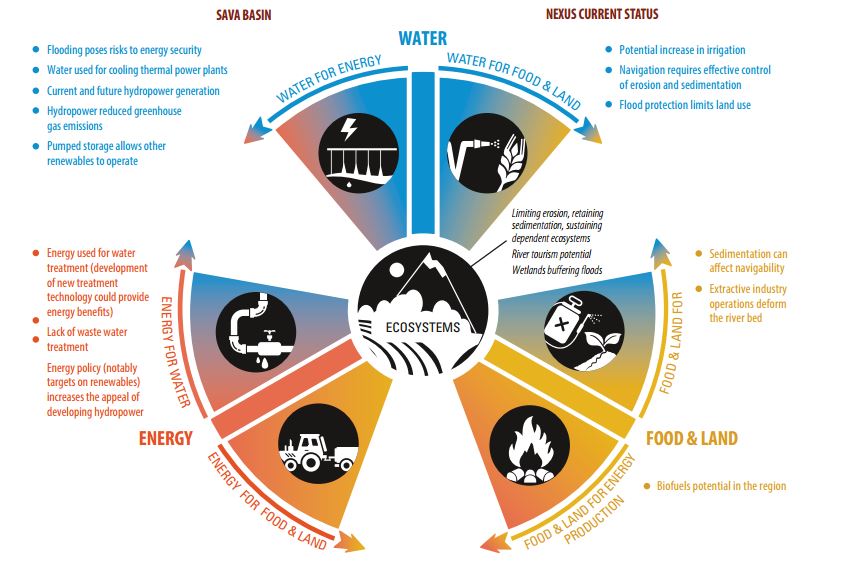
Photo: UNECE
Coordinating assessment of water, energy and agricultural needs among riparian countries is the key to sustainable development in the Sava River Basin.
This is the main conclusion of the report “Reconciling Resource Uses in Transboundary Basins: Assessment of the Water-Food-Energy-Ecosystems Nexus in the Sava River Basin” published by the United Nations Economic Commission for Europe (UNECE).
The report is the result of an assessment process carried out in cooperation with the International Sava River Basin Commission (ISRBC) in the framework of the UNECE Convention on the Protection and Use of Transboundary Watercourses and International Lakes, reads a press release published on the UNECE’s website.
This technical report contains results of the nexus assessment of the Sava River Basin shared by Bosnia and Herzegovina, Croatia, Montenegro, Serbia and Slovenia that was carried out from 2014 to 2016 in the framework of the UNECE Water Convention’s Programme of Work. The methodology employed was developed specifically for assessing the nexus in transboundary basins.
“Taking into account a broad scope of work of the International Sava River Basin Commission, covering all aspects of water resources management, the nexus assessment has contributed to a progress towards the achievement of three important objectives set by the Strategy on implementation of the Framework Agreement on the Sava River Basin, namely the improvement of the dialogue with key sectoral stakeholders, the integration of water policy with other sectoral policies, as well as the intersectoral coordination and cooperation in the countries of the Sava Basin,” said Dejan Komatina, secretary of International Sava River Basin Commission on the occasion of the report’s publication.
The riparian countries rely on the resources of the basin, especially in terms of hydropower which is a major source of energy. Water is identified as an important resource for cooling thermoelectric power plants, but also for achieving climate change mitigation and renewable energy targets. According to the report, development planning for the energy sector is not necessarily connected with water management planning which calls for increased coordination, information sharing and transboundary cooperation.
The report also states that the trade-off between hydropower development and agricultural expansion needs to be carefully managed and that economic development needs to be weighed against environmental effects.

Underlining potential issues deriving from possible scenarios, the Sava nexus assessment provides a range of information solutions to address the identified intersectoral challenges. They include developing and implementing guidelines that combine good experience and help harmonize approaches. The multiple and flexible use of infrastructure, investing in expanding and upgrading water infrastructure, coordinating infrastructure investments and protecting natural infrastructure assets, are some of the recommendations specified in the report.
Thanks to the intersectoral assessment, the report gathers input from a broad range of key stakeholders from the riparian countries as well as analyses carried out by the Royal Institute of Technology in Stockholm and by the Joint Research Centre of the European Commission focusing on the respective fields.
The preparation of the report was supported by the German Federal Ministry for the Environment, Nature Conservation, Building and Nuclear Safety, the German Federal Environment Agency and Switzerland.


















Be the first one to comment on this article.